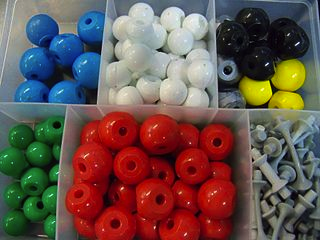Chemical Formulas
The Chemical Formula to Success
As we mentioned earlier, chemistry is a lot like a foreign language. One particular notation that is especially important to know is how chemists use chemical formulas to express the composition of molecules and compounds in terms of chemical symbols. In other words, a chemical formula is a notation describing what elements are present and in what ratios.Want to hear some great news? There are only two types of formulas we need to be concerned with: molecular formulas and empirical formulas. The sooner we get started, the sooner we'll be done so let's do this.
Molecular Formula
A molecular formula shows the exact number of atoms of each element when the molecule is at its smallest. We've already seen several of these formulas, so this isn't totally new. Woo! For example, H2 is the molecular formula for hydrogen, O2 is the molecular formula for oxygen, and H2O is the molecular formula for water. The subscripted number indicates the number of atoms of each particular element that is present. If a subscript is absent it is assumed to be one.
This seems like a really great time to bring up a very useful tool to help in the study of chemistry: molecular models. We're sure you've seen them around your classroom. Nope, they aren't LEGOs (although they could be). They usually contain plastic balls and sticks to represent atoms and bonds. Molecules are too small for us to observe directly so an effective way for us to visualize molecules is to build them on a larger scale with a model kit.

A Hands-On Molecular Model Kit. (Image from here.)
The standard molecular model kits are ball-and-stick type models. These model kits consist of colorful plastic or wooden balls with holes in them to represent atoms like the picture above. The plastic sticks are used to represent the chemical bonds between atoms. Each atom is represented by a different color. It's also nice to have craft time in chemistry class.
The first step in building an accurate molecular model is to write out the structural formula of the molecule, which shows how atoms are bonded to one another. For example, we know that in water two H atoms are bonded to a central O atom. Therefore the structural formula of water is H—O—H. We draw a line connecting the two atomic symbols to represent a chemical bond. Once the structural formula is completed we can begin construction of the 3D hands-on model.
Empirical Formula
What is the molecular formula of hydrogen peroxide? Here's a hint: It starts with H2and ends in O2. Put that together and what do you get? H2O2. This formula indicates that each hydrogen peroxide molecule consists of two hydrogen atoms and two oxygen atoms in a 2:2 ratio.
An empirical formula is slightly different. It tells us which elements are present in the simplest whole-number ratio of their atoms. The simplest whole-number ratio of atoms in hydrogen peroxide is one hydrogen atom to one oxygen atom (1:1). This means the empirical formula of hydrogen peroxide is HO.
Empirical formulas are the simplest chemical formulas. They are written by reducing the subscripts in the molecular formulas to the smallest possible whole numbers. Better practice your common denominator skillz.
A molecular formula is considered the true formula of a molecule. If we know the molecular formula we can easily figure out the empirical formula, but knowing the empirical formula tells us nothing about the molecular formula. It begs the question, why do chemists even bother with empirical formulas? As a general chemistry student, you probably won't use or need an empirical formula very often if at all. If you're a chemist in a laboratory trying to determine the identity of an unknown substance, the first step is usually determining a compound's empirical formula.